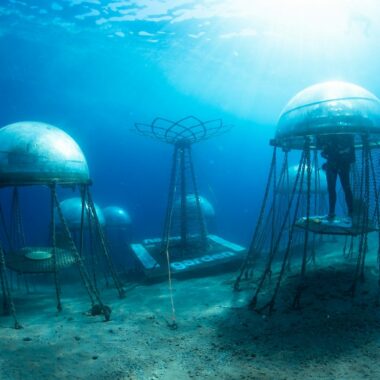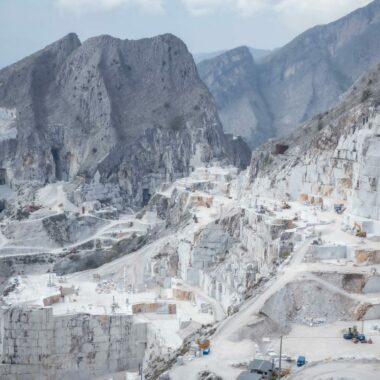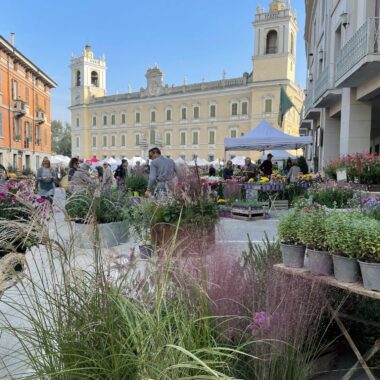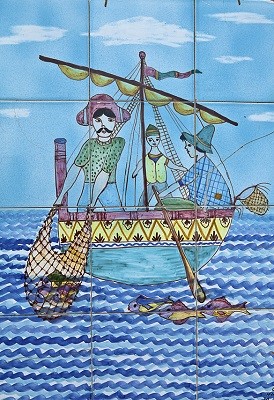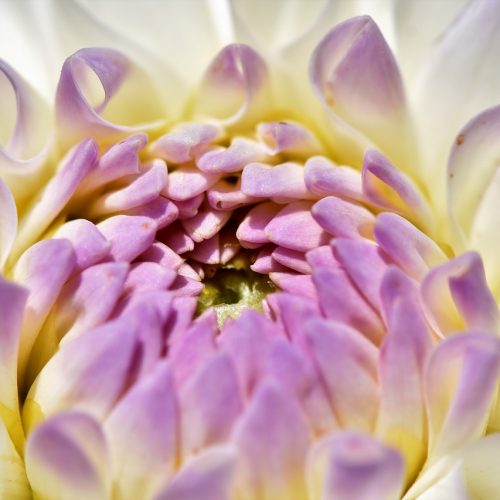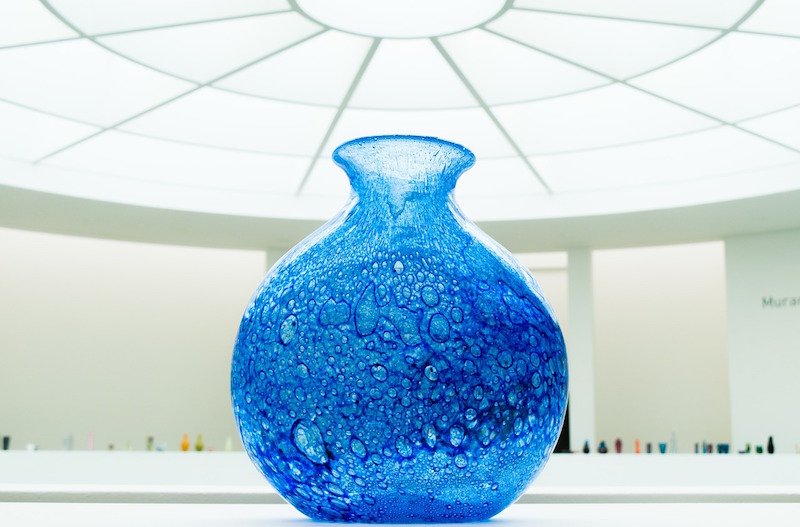Terracotta.
Clay. Earth. Dirt. Soil. From such humble beginnings man created an empire. Bricks of clay built homes and tiled roofs and pavements. From the ground came plates, bowels, pots and containers of every shape and size which held food, water, and various goods. Ovens of dirt baked both bread and gave warmth. Man, himself, is said to be created from clay. Christian, Islamic, Greek, African, and many other mythologies attribute man’s origins to the muck and mire of wet earth. It is no wonder then, with man being born from the earth that clay would be among the first materials to be transformed by the ingenious hands of man.
The transformation was a dramatic one. From common soil to the faces of angels, man manipulated clay in such a way as to create artistic life from it. Many sculptures later carved in stone or cast in bronze found their birth in clay. While terracotta works are found throughout the world, terracotta from Italy deserves special consideration. In fact, the word terracotta hails from Italy and is recognized universally to denote fired clay. It is no wonder then that Italy would host some of the world’s most fantastic terracotta sculptures. Even those terracotta figures which served as drafts or molds for bronze and stone are magnificent works in their own right; sometimes achieving a degree of intensity and emotion impossible to attain in other mediums.
Terracotta sculptures used as models for bronze and stone sculptures often did not survive past their initial use. Many of these works were left unfired, leaving them fragile and subject to cracks and breakage. Some were destroyed in the process of making molds. Many were just abandoned to the elements. Few sculptors took the time to preserve their original studies in terracotta. Luckily, some wonderful examples of terracotta sculpture were left behind by Venetian sculptor Antonio Canova. Whether Canova, feeling his imminent fame, preserved his work for posterity or whether he kept the terracotta sketches for sentimental reasons is unknown. However, we are very fortunate that so many of his terracotta works have survived.
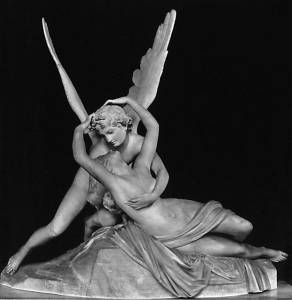
Canova’s interpretation of the popular Greek myth involving Cupid and Psyche is one of his most popular sculptures. In it the graceful winged Cupid delicately lifts the sleeping Psyche to wake her with his kiss. In his embrace her arms stretch poetically upward to find him, her hair tumbling softly down, her faced upturned to his searching lips. Most of us are familiar with the final marble sculpture. Its smooth finish and delicate contours impress upon the viewer Canova’s romanticized vision.
However, few of us have seen Cupid and Psyche in their early stages of development. Canova’s terracotta renderings of Cupid and Psyche show an unloosed passion that his later marble version would not be able to duplicate. This is the power of terracotta. In deep earth tones Canova’s terracotta Cupid and Psyche show a different interpretation of the tale. In his early rendition the wingless Cupid is subject to the advances of Psyche.
This composition entitled Struggling Nude Couple would not be realized as is in marble but would be changed to suit the conventions of the buyers of the day. Left rough and unfinished the two nude figures embrace passionately. The woman dominates in the interaction with the man left willingly weak in her arms. The vigorously raked, textured surface further enhances the immediacy of their desires. Sculpted in this primal medium this sketch takes on a life of its own, becoming, against the will of the creator, a work unto itself. It is interesting to consider how well received this sculpture would have been, if it had been finished in marble or bronze.
Would the public at the time have been accepting of this imagery in which the woman was the aggressor? It is highly unlikely. Terracotta sketches like these provide valuable insights into the private worlds of histories finest sculptors.
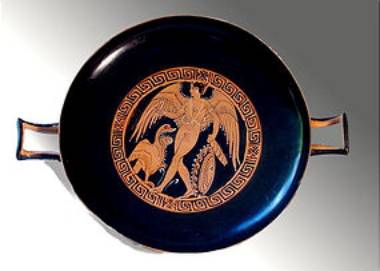
When considering terracotta as an artform one can not discount the numerous examples of fine ancient pottery still in existence today. Such vessels, elaborately decorated and profoundly detailed, were often decorative or ceremonial in nature. Because of their ceremonial connotations their status as works of art can not be disputed. Beautifully refined works, such as this Etruscan kylix (kylix refers to any shallow, stemmed, two handled drinking cup from Greece) dates between 360 and 380b.c.
The Greek influence can be seen in the imagery present. The kylix depicts winged victory, a loaf of bread in her hand, shield at her feet, standing next to a regal swan. The figures are surrounded by a standard Greek Key boarder.
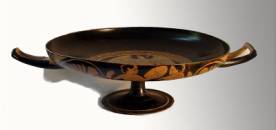
The outside of the vessel shows nude figures being fanned by palm leaves while standing among a field of stylized palms. The black glaze provides a stunning contrast to the deep red color of the clay.
Use of glaze, paint, or guilding was not restricted to pottery alone. Many pieces of sculpture, relief, and frieze use the same decorating techniques to enhance the natural color of or provide contrast to the clay. This vessel is representative of a type of terracotta called redware. When clay contains large amounts of ferrous oxide it has a red color which was highly prized for pottery by the Greeks and Etruscans.
It is amazing that the same material which gave birth to Canova’s Struggling Nude Couple was used to create this wonderful piece of Etruscan pottery. It is the adaptability and affordability of terracotta that made it a favored medium for many artists.
By: Jamie Sue Austin









